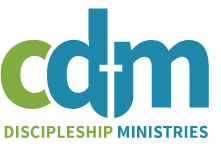![]() I had the privilege of making a comment and reading the manuscript in the beginning stages of this book. Here is what I said: “Same Lake, Different Boat is a heart-wrenching book by an author who has lived its message. It will equip you…to serve as instruments of healing and hope, to accept the reality of disability with joy and thanksgiving, and to appreciate the privilege of loving people with disabilities. Stephanie Hubach has given us a goldmine from a solidly biblical and theological perspective. This book is about ministry, caring, listening, coming alongside and helping. This book is priority reading for every leader in the church, as well as families of the disabled.”
I had the privilege of making a comment and reading the manuscript in the beginning stages of this book. Here is what I said: “Same Lake, Different Boat is a heart-wrenching book by an author who has lived its message. It will equip you…to serve as instruments of healing and hope, to accept the reality of disability with joy and thanksgiving, and to appreciate the privilege of loving people with disabilities. Stephanie Hubach has given us a goldmine from a solidly biblical and theological perspective. This book is about ministry, caring, listening, coming alongside and helping. This book is priority reading for every leader in the church, as well as families of the disabled.”
Stephanie Hubach is the mother of two boys. The younger one, Timmy, was born with Down syndrome. She writes about how to have a biblical understanding of disability, how to deal with disability in the family, and the church’s role in ministering to those individuals and families with disabilities.
In a very transparent way, Same Lake, Different Boat opens up the Hubach family to share with us their laughter and tears, but more clearly shows the challenges and opportunities before us in knowing how to minister to the disabled and their families. Understanding and articulating a biblical view of disability are often difficult tasks. At the recent 2006 International Women in the Church Conference, Hubach led a seminar entitled “Those with Disabilities Help to Make us Whole.” That is what the book is all about. Hubach emphasizes what she calls the “common view of disability,” being abnormal in a normal world. Often things that deviate from the normal are viewed as abnormal. That’s not the way people with disabilities want to be seen.
She writes, “Disability is indeed a normal part of life as we know it. While unpredictable, it occurs with a degree of regularity. (For example, one in every 800 children is born with Down syndrome). It is to be expected. But the key to understanding this is the context, and the context is in the following four missing words: in an abnormal world. The biblical view of disability is that disability is a normal part of life in an abnormal world.”
Same Lake, Different Boat reminds us that not all people are comfortable or at ease with the disabled, especially those with “cognitive disabilities,” therefore do not know how to relate to someone with a disability. This book will help you and challenge you to think more biblically about this ministry. One paragraph summarizes the aim of the book:
“The next time you encounter a family touched by disability that is learning to live a new normal life, will you declare an emergency and ‘dial 9-1-1’ or will you see its struggles as extensions of your own? Will you ignore them in their challenges, or will you identify with the task before them? Remember: It’s all different, and it’s all the same. Families with a disabled family member face the same types of struggles as other families, but to a greater degree. May all families within the church be willing-in biblically boundaried ways-to engage each other by providing assistance, encouragement, and perspective.”
Same Lake, Different Boat will make serve as a call not to turn away from the disabled or families with disabled members. It will help you to see how to reach out and serve, as members of God’s covenant family, to those who not only need you but will bless your life in return.
